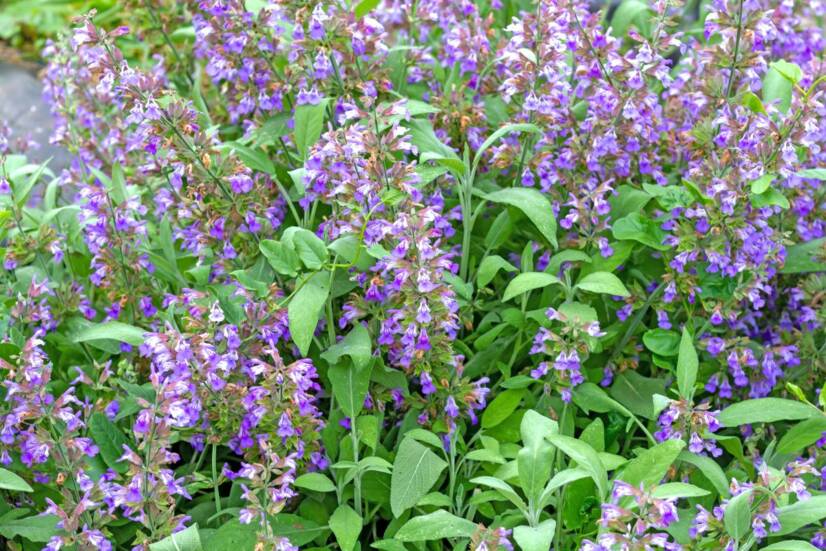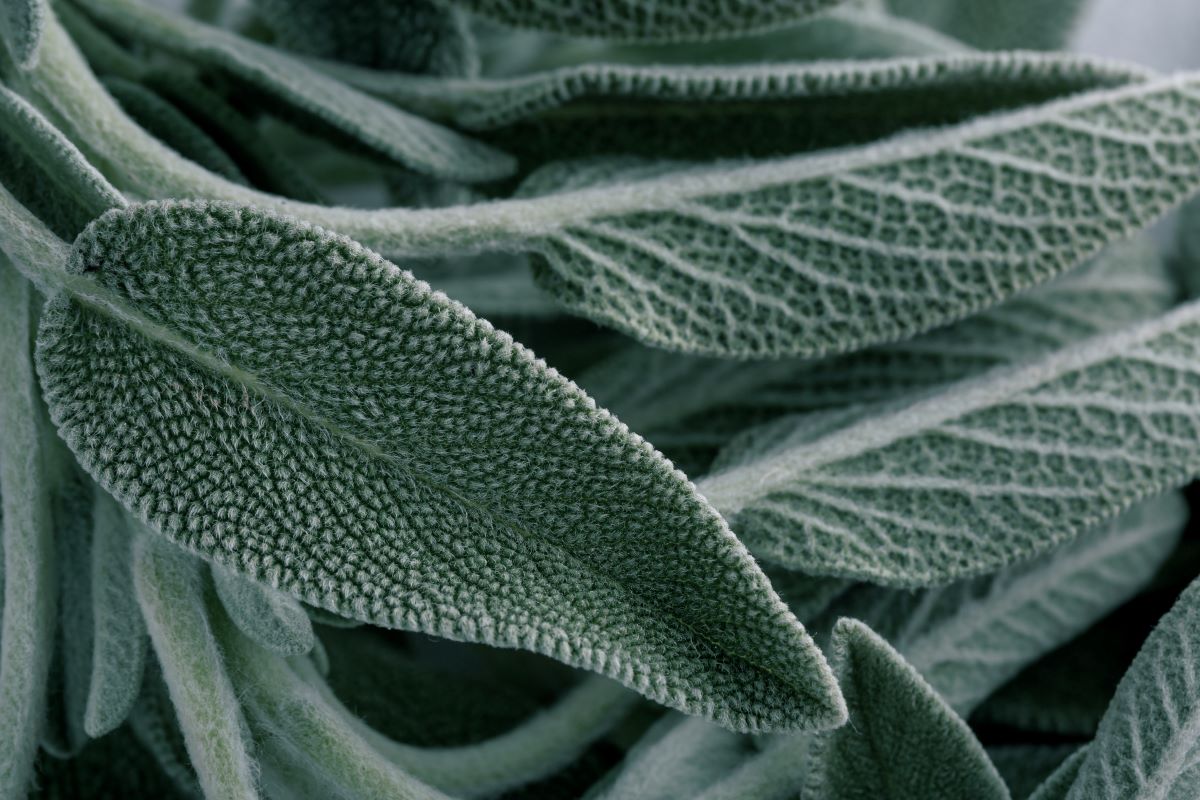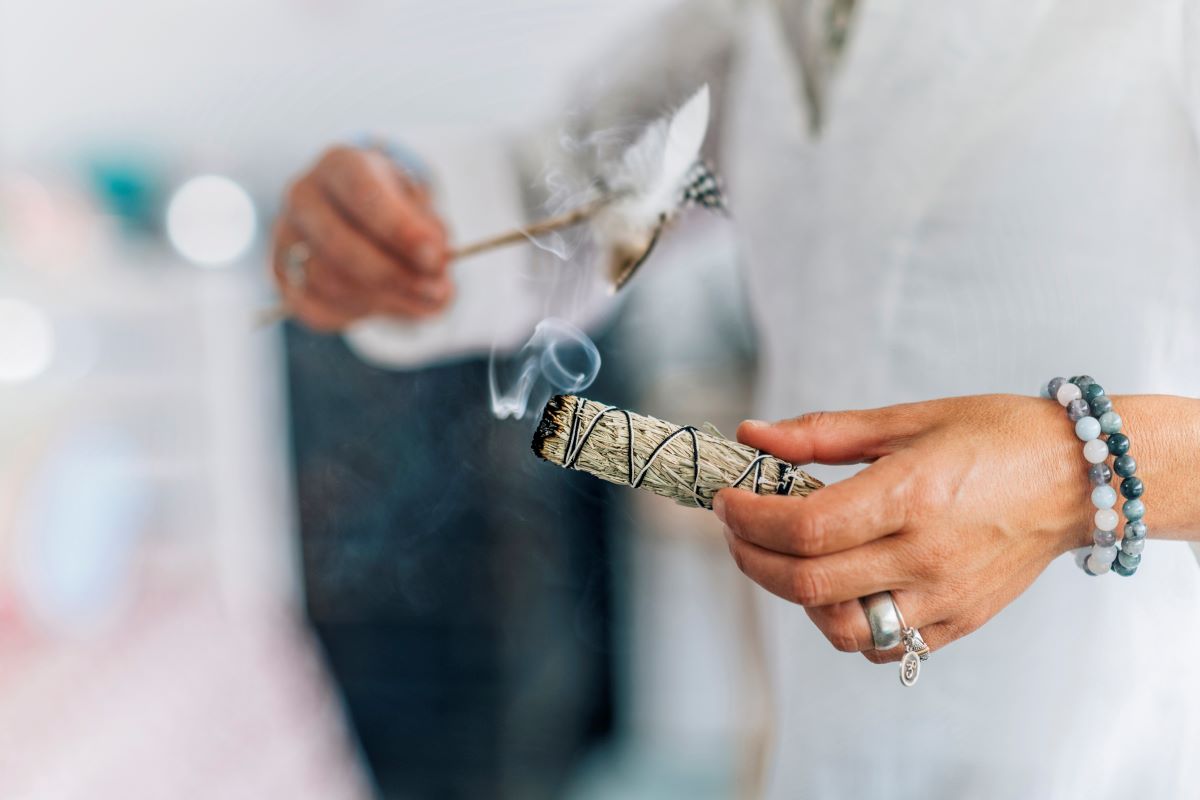- 2000 tips for gardeners: Franz Böhmig - Stanislav Peleška
- Mojerastliny.sk - Mudrc
- Garden.sk - Sage will bring you relief
- mojerastliny.sk - Fire sage
- zahrada.sk - Step by step.
- mojemedicina.cz - Sage - it will bless your throat and stomach problems
- botany.cz - Salvia Pratensis L. - sage / meadow sage
- bylinkyprovsechny.cz - Perovskie lebedolisá (Yang's sage) - health effects, what it cures, uses, what we collect
- healthline.com - 10 effects of burning sage, how to get started and more
- ncbi.nlm.nih.gov - Salvia mellifera - How does it relieve chronic pain?
- pubmed.ncbi.nlm.nih.gov - Potential therapeutic uses of infusions and hydroalcoholic extracts of Romanian sage ( Salvia glutinosa L.)
- plantura.garden - White sage: the plant, care and effects of the sacred sage
How to grow clary sage? What is it, effects and uses

Sage is a perennial warm-loving herb that is considered medicinal for its beneficial effects on the body. It is used not only in the form of teas, decoctions, but also in cosmetics and gastronomy. What are its effects and how to care for it, you will learn in the article.
Characteristics
Sage (Salvia officinalis) belongs to the family of deaf-smelling plants.
You can see it growing along roadsides, in bushes, in light woods, in forest clearings and on rocky slopes.
It is a perennial woody semi-shrub with a whiskery branched stem topped with herbaceous hairy square stems
Its leaves are oblong or lanceolate, tapering at the base.
Young leaves are felted, grey in colour. Older leaves are green.

The flowers, 6-12 in number, are located at the top of the stem. Their colour is blue-violet, purple-red.
The fruits are made up of 4 drupes, which break up as they ripen.
It flowers from late May to July.
Its height is 30-70 cm.
The dried plant has a light green colour and a typical scent with a sharp bitter taste.
Sage is a honey-bearing plant with a high nectar content.
Growing sage
It is grown in gardens and propagated by sowing or rooting cuttings.
It likes warmth but can adapt to colder areas.
Sow in a place where there is plenty of sunlight and the sage will not be exposed to strong winds.
Sage can be sown in early spring, but mid-April is more optimal.
When sowing from seed, the seeds are placed one to two centimetres deep in the ground, 40 to 60 centimetres apart.
It is recommended to grow it for 5 to 10 years in one place.
Suitable soil is sandy loam, but it can also thrive in drier, nutrient-rich, calcareous soil.
A substrate specifically designed for herbs is recommended to enhance the herb's flavour and aroma. Fertilisation with fresh manure is not recommended.
Watering should be moderate as sage prefers drier soil.
Growing on a balcony
If you decide to grow sage on the balcony in pots, keep only one plant in each pot.
Do not over-water it, especially in autumn when it is very sensitive.
Winter and sage care
You don't need to take the sage out of the ground. You can protect it by covering it thoroughly with straw, chicory or leaves to prevent it from freezing.
Always prune it carefully if you want it to grow beautifully.
In early spring, remove old leaves from around the shrub. Care and pruning of sage is done by removing dry, old leaves and cutting back old and damaged shoots.
Water the soil after pruning.
For older shrubs that are several years old, pruning can be carried out below.
What are the uses of sage?
It has a wide range of uses, from perfumes, teas, decoctions, tinctures, but also as a spice in cooking and baking. In the kitchen it can only be used in small quantities, as it is strongly aromatic.
The use of sage is not suitable for children, pregnant women and lactating women.
Side effects
- The tea is not recommended for pregnant women and children. In pregnant women, it can cause pregnancy complications and even miscarriage.
- If you are taking any medications, you should be careful. It can cause interactions with some medications. Therefore, it is recommended to separate taking medications and drinking tea for a time.
- Do not exceed the daily recommended dose of 3 cups per day. You can cause digestive problems, even induce convulsions in epileptics.
- In nursing mothers, it stops lactation.
- In combination with alcohol, it has a negative effect on the organism.
What substances does sage contain?
Sage contains a high content of active substances that are used as essential oil in cosmetics, medicine and gastronomy.
It contains high amounts of essential oils, flavonoids and phenolic substances. It also contains minerals, vitamins A, B, C, E, K and hormonally active substances.
It has anti-inflammatory and antibacterial effects.
It has a bitter taste due to the large amount of tannins.
In some cultures, sage is used as part of ritual ceremonies (for blessing, sacrifice and purification).
It is not recommended to take it long-term or to exceed a daily dose of 3 cups of decoction per day.
Sage and its related species
All species of sage are found throughout the world. Most species are found in Central and South America, the Mediterranean, Mexico, Asia, and Africa.
Because of the conditions that sage likes (warmer, sunny places), you won't find it in tropical forests or Siberia.
The sage genus has about 1000 separate species.
We will list some of them that are known:
Meadow sage (Salvia pratensis) grows in meadows, on hillsides and along roadsides. The flower colour is usually purple, but sometimes white or pink with a noticeably longer upper lip. It is often confused with Salvia officinalis, but this plant has no medicinal properties and is more ornamental.
Sage (Salvia nemorosa) grows on dry lawns, roadsides, dykes. This perennial comes in several colours. It is an ornamental nectar-bearing plant. Its honey is thick and white with a delicate scent. It is not used for medicinal purposes.
Sticky sage (Salvia glutinosa) grows on shaded scree, in damp woods, on the banks of watercourses. In Romanian folk medicine it was used to treat wounds, mild infections and inflammation, but this has not been scientifically documented.
Garden sage (Salvia viridis) is an annual, rarely biennial plant. It is often planted in parks and gardens as an ornamental plant.
White sage (Salvia apiana) is used as a medicinal plant in incense rituals for its purifying properties.
It also has medicinal properties because it contains tannins, bitter substances, flavonoids, essential oils and resin, similar to clary sage. White sage is used in rituals more because its scent is more intense and sour.
Black sage (Salvia mellifera) is considered sacred and is used in rituals and ceremonies.
It is also used in the decoction in which you soak your feet.
It relieves foot pain by penetrating the skin of the foot and stops chronic pain. It also stops chronic pain in the back, neck, legs, knees, shoulders and helps with arthritis. This decoction was used by the ancient Indians and was called sun tea.
The decoction is prepared by collecting fresh leaves and branches of black sage in the ratio of 115 g of the plant to 2 litres of water.
After pouring the water, the herb is placed in the sun for 6 to 8 hours. Before use, the plant is removed from the water and both feet are placed in the water for 20 minutes. After use, the decoction is stored in the refrigerator and can be used the next day. At least 7 sessions are recommended.
Salvia sclarea has a straight, angular stem. The leaves are opposite and wrinkled.
It is a biennial plant. It produces a rosette of ground leaves in the first year and a stem with both leaves and flowers in the second year. The colour of the flowers is pinkish-purple.
It is highly aromatic and also medicinal. It is used in cosmetics, as a food additive to flavour wine and as an additive in paints and varnishes.
Salvia splendens is an ornamental long flowering annual with red flowers. It has a low stature of 25 to 40 cm. Native to Brazil, it is used as an ornamental plant.
The Hispanic sage and California sage are known for their chia-like seeds, which are very nutritious and full of antioxidants.
Salvia farinacea is a long-flowering, shrubby-looking annual with dark blue flowers. Its use is as an ornamental plant in parks.
The wild sage (Salvia divinorum) is native to Mexico and has hallucinogenic effects when ingested or smoked. It is a drug.
Spanish sage (Salvia lavandulaefolia) has a positive effect on memory.
Russian sage is known as perovskia lebedolistica or Afghan lavender.
It is a suitable alternative to lavender. Its scent is reminiscent of sage. Its use is slowly becoming established in gastronomy in salads or as a condiment.
It relieves indigestion, reduces fever, relieves cold symptoms, relaxes the respiratory tract and has a calming effect.
Sage has both internal and external medicinal uses.
You can buy sage fresh, dried and in preparations such as sage tea, syrup, lozenges, tablets, tincture, drops, oil, ointment.
You can prepare tea, decoction, infusion, gargle, drops, tincture, poultice.
It is commonly found in preparations such as toothpaste, mouthwash to suppress bad breath, cosmetic creams, lotions, cleansing gels for problematic skin with acne.
In the kitchen, sage is used as a spice in the preparation of dishes, to which it adds a specific flavour and aroma.
However, it should be used with caution because of its strong aromatic scent.
It is suitable in fatty dishes, for flavouring veal, pork and mutton.
When fresh, it is suitable for spreads, sage butter and salads.
Internal use
The effect of sage is versatile. It helps not only with sore throats, gingivitis, but also with excessive sweating and bloating.
It is known for its medicinal effects in the form of decoctions, teas, oils, but it also has uses in the kitchen as a spice.
It is very popular for its antiviral, anti-inflammatory and antibacterial properties.
Health benefits of sage
- Reduces sweating. Reduces sweat gland secretion during night sweats in people with tuberculosis, sweating caused by menopause and vegetative disorders.
- It has antibiotic and antiseptic effects.
- Strengthens the nervous system and the body's defences.
- It is also used for diarrhoea.
- It reduces milk production in nursing mothers.
- It has anti-inflammatory effects in diseases of the digestive tract, liver, biliary tract and also in kidney stones.
- Supports liver function.
- Reduces flatulence.
- Promotes expectoration of mucus.
- Helps with prolonged menstruation.
- Has a relaxing effect on cramps.
- Lowers blood sugar levels.
- For hormonal disorders and depression, clary sage can help, but white sage and clary sage also have a similar effect.
- It has a calming effect.
- It has a positive effect on stress and insomnia.
External use
For external use, it is used, for example, in gargles and tiles.
- As a gargle it is used for inflammations of the oral cavity and tonsillitis.
- It is suitable for gargling for toothache and periodontal disease.
In the form of essential oils, it has a beneficial effect when inhaled for bronchitis.
As a shampoo or conditioner to remove dandruff from the scalp.
As a poultice, it is effective on poorly healing wounds and for eczema.
In the bath it is used as a disinfectant for skin diseases caused by fungus.
In combination with chamomile and oak bark it is used for vaginal rinses in white discharge.
Harvesting and storage
Sage is harvested once or twice a year.
The leaves are harvested when the flower buds are flowering, just before flowering, i.e. from May to September.
The first harvest is from May to June and the second harvest in August and September.
The ideal time to harvest fresh leaves is on dry summer days, at midday, when it has the greatest amount of essential oil.
The leaves are dried in the shade where the air temperature should not exceed 35 °C.
For the production of essential oil, the leaves are harvested at the time of full flowering, which is in the months of June-July. Two to six-year-old plants contain the most essential oil.
Sage essential oil has antifungal and anti-inflammatory properties. It has an intense herbal scent.
Instructions for the preparation of medicinal preparations from sage.
Sage tea
To prepare it, 1 teaspoon of the herb is enough. Pour half a liter of boiling water over the sage and let it infuse for 4 minutes.
Then strain the tea and drink it in sips.
Half a litre of tea is the optimal amount for the day. Do not exceed the daily dose because of possible side effects.
At higher doses, it causes convulsions similar to epileptic spasms.
Gargling
Gargle for sore throat, toothache. To prepare, you need 1 tablespoon, which you pour into a cup. Pour hot water over the herb and let it infuse for 8 minutes.
You can also prepare a gargle by pouring 3 tablespoons of the herb in 1/4 litre of water. Bring the water with the herb to the boil and strain immediately. Then strain it, let it cool and use it for gargling.
Making sage tincture
To make the tincture, you need 50 g of fresh or dried sage. Put it in a jar or bottle and pour half a litre of good quality alcohol (vodka or other 45-60% alcohol).
After filling, close the jar and let it stand for 14 days to 4 weeks in a cool, dark place. After aging, strain and use as needed.
The tincture is used to gargle for sore throats. Use 1 tablespoon in 1.5 dcl of water.
It can also be used internally for colds by taking 1 teaspoon with a glass of water, 2-3 times a day.
Bath
For a bath, use 100 g of the herb in 1 litre of water.
Steaming
The prepared infusion leaches all the substances from the herb. It can be used as a tea, for gargling or rinsing the mouth, as well as for rinsing the hair and skin.
To prepare it, pour 1 teaspoon of the herb over boiling water and leave to infuse for 8 minutes.
Use in gastronomy
Fresh sage is of great importance in gastronomy. It can be added to dishes or made into a herbal sage butter that can be used to flavour meat.
You can prepare sage butter by chopping fresh sage finely and adding it to whipped butter. Mix the sage with the butter and wrap it in foil or prepare batches straight. Let it cool in the fridge or freeze it in the freezer. You can use it whenever you feel like adding it to your food.
Cleansing with sage
Sage is also used in rituals in various cultures.
Burning sage has been considered as a cleansing. It is one of the ancient spiritual rituals for removing not only spiritual impurities but also insects.
Sage cleanses the air of bacteria and insects. Burning sage also destroys allergens, which is especially helpful for asthmatics, allergy sufferers and people with respiratory conditions.
In some cultures and healers, burning sage is used to connect with the spiritual realm and by healers to achieve a healing state.
Burning sage is mildly psychoactive due to the thujone content in some species such as white sage and clary sage. It is also used to improve intuition.
In some cultures, burning it is used to get rid of negativity, to get rid of past traumas, negative energy and bad experiences. It creates a positive environment for meditation with the intention of getting rid of negative thoughts and for self-improvement.
The smoke from burning sage creates a fragrant smoke that is used to cleanse oneself and spaces, even to cleanse specific objects.
White sage is used to improve mood and banish negativity, for anxiety and depression, and to relieve stress.
Garden sage or white sage is used to improve sleep.

What do you need?
To perform such a sage burning ritual you need:
- A bundle of sage, a ceramic or clay bowl to keep the ashes from the burnt sage from falling on the ground.
- It is better to light the sage with a traditional match, which you blow out immediately after lighting the bundle.
- Use a feather or fan to fan the smoke around the room.
What kind of sage is suitable for cleansing?
White sage (Salvia apiana), but also other types of sage.
During the cleansing, send all people out of the room and banish animals so that no one is in the room. Before the cleansing, open the window. Keep it open during and after the cleansing so that the smoke comes out of the room.
Interesting resources
Related










